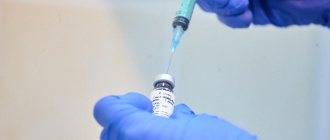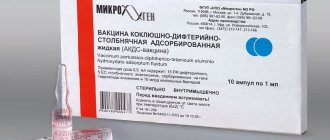Is BCG necessary?
Currently, people around the world die from tuberculosis every day. The mortality rate of this disease exceeds even cardiovascular diseases and cancer. The widespread prevalence of tuberculosis kills more women than difficult childbirth and pregnancy. Tuberculosis is a serious disease leading to high mortality rates. Russia is a country where the prevalence of this disease is also high, it is not inferior even to African and Asian countries.
For children, tuberculosis is especially dangerous due to the likelihood of developing its severe forms. If left untreated and without intensive care, the disease can be fatal. BCG vaccination reduces the likelihood of infection by 85% and increases the body's resistance to the disease. Even if infected, a vaccinated child is more likely to be cured than others.
What does BCG protect against?
- tuberculosis;
- meningitis;
- disseminated forms.
The World Health Organization recommends vaccination the sooner the better. Therefore, in Russian maternity hospitals, the first vaccination on the list was BCG. But it is worth knowing that the effect of the vaccine lasts only about 20 years, after which revaccination is carried out, but does not give the necessary effect.
Thus, it is necessary to get the BCG vaccination, because it will help protect your child from tuberculosis and its severe forms, such as meningitis, for the first 15-20 years of life, when immunity has not yet been fully formed.
What should a BCG vaccination look like?
After the injection, a papule forms on the patient’s skin; its diameter varies from 5 millimeters to 1 centimeter. This reaction indicates a successful injection. After some time, namely 15-20 minutes, this papule disappears through resorption.
After at least a month, a reaction to the vaccine begins to appear. A pustule soon appears at the injection site, inside which suppuration forms. This is not scary at all, you shouldn’t be afraid of such a reaction.
After this, a compaction is observed at the injection site, which later turns into a bubble with liquid. That is, BCG at 2 months looks like a small bubble that bursts at 3 months. A wound after BCG is normal.
This crust should not be removed, picked out, or scratched, otherwise the wound will take longer to heal and there is a risk of introducing a foreign infection. You should also be careful during water procedures, as the wound should not be wet. Antiseptic treatment is not required.
After some time, a scar appears in this place, its diameter on average is about 4 mm. The scar is characterized by a reddish tint. After a year, the mark disappears completely, leaving behind only a barely noticeable scar, as evidence that the vaccination was done correctly.
So how long does BCG take to heal? On average up to six months. After a year, the redness disappears completely. If no anomalies were observed during the vaccination period and all signs were observed, the vaccine was carried out successfully.
These signs are:
- presence of papule after injection; redness of the injection site after 1.5-2 months;
- the formation of an abscess, and after a bubble with liquid;
- re-formation of pus after it has drained;
- the size of the scar does not exceed 1 centimeter.
The first BCG is done on the third day after birth, and then only at the age of seven in the absence of contraindications.
BCG: how long does it take to heal?
The main symptoms are noted a month or a month and a half after the procedure. How long it takes for BCG to heal in infants cannot be said with certainty: the duration of the reaction depends on the characteristics of the body and many other factors. In most cases, the formation of an abscess lasts almost two months, and the formation of a crust and scar takes about a month. How BCG heals at 7 years old also depends on the immune system. Normally, the Mantoux test should look like an injection point.
During the period of formation of immunity to tuberculosis, the following processes occur in the child’s body, which are not pathological:
- redness of the skin at the injection point;
- a small abscess at the stage of scarring of skin tissue;
- purulent accumulations in the wound, not accompanied by tissue swelling and severe redness;
- itching, signaling that the vaccine is working and the skin is healing;
- swelling of the skin, confirming the presence of an immune response to the administered drug;
- a slight increase in temperature, lasting no more than 3 days, provoked by the appearance of antibodies to the vaccine in the blood.
If the temperature after the injection lasts more than 3 days, the child should be urgently taken to the pediatrician.
What's the reaction?
The baby's body reacts sharply to this vaccine. What side effects may occur? Often, parents panic when reactions such as fever or itching occur. But these are normal phenomena.
Let's take a closer look at the reactions:
- Suppuration. This is also one of the normal reactions to the BCG vaccine, appearing a month after the injection. In this case, there should be no redness or inflammation around the abscess. The healing of this abscess takes about six months. Also, the use of any antiseptics, iodine, and so on is not required. It is also worth making sure that the child does not scratch the abscess. Under no circumstances should you squeeze it out. Excessive fluid discharge from the wound is removed with a bandage or gauze. Redness or swelling is a sign that you need to see a doctor. This may be a consequence of infection. A thorough examination of the child is prescribed if suppuration occurs more than twice.
- Itching. Severe and constant itching may indicate the presence of an allergy or the appearance of a keloid scar. In this case, you should consult an infectious disease specialist.
- Redness. During the period of vaccination, such a reaction is considered normal. Once the pus drains, the skin may turn red as the scar forms. But it is worth keeping an eye on the area where the redness is spreading - it should not extend beyond the injection site. If a keloid scar (redness with swelling) is observed, it may also be harmless if there is no infection.
- Swelling. It appears almost immediately after administration of the drug. After a few days it goes away. After this, the injection site should generally look like a healthy area of skin. Only after 1.5 months does suppuration begin to appear, and no swelling should be noted.
- Fever. This is an infrequent occurrence, and the temperature rarely rises above 37.5 degrees. This symptom is most often observed during the formation of an abscess. It is necessary to consult a doctor if the temperature rises on the day of the injection.
- Inflammation. If inflammation occurs after 1.5 months, there is no reason to worry.
It is also normal for an abscess, a small pimple, or a fluid-filled blister to form if no abnormalities are observed around the injection site. Otherwise, you should consult a doctor.
Always carefully monitor the child’s body’s reaction to the vaccine and do not hesitate in case of deviations, but immediately consult a doctor.
How is vaccination tolerated: normal and deviations
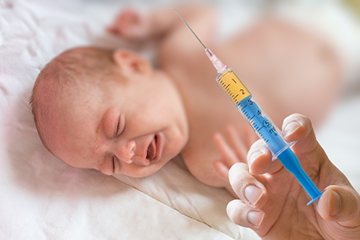
Reactions to the BCG vaccination in a baby may vary. Therefore, parents need to know what is considered normal and what requires immediate medical intervention.
Redness of the BCG injection site, accompanied by barely noticeable suppuration, is normal. However, only if the redness does not spread to surrounding tissues.
A deviation from the norm should be considered severe suppuration, in which swelling and redness are observed in the surrounding tissues. This may indicate infection has entered the wound.
In such cases, the child needs to be examined by a pediatrician, since other routine vaccinations may be contraindicated until the condition returns to normal.
A normal reaction to the BCG vaccination is slight swelling, which disappears on its own after 2-3 days.
The injection site may itch - this is due to the processes of healing and regeneration of the skin. This phenomenon is normal, but you should not allow the wound to be scratched to avoid infection. Therefore, it is advisable at this stage to apply a gauze pad to the vaccination site.
In individual cases, children may develop a fever after vaccination. If it does not exceed 37.5-38⁰С, everything is in order. At temperatures above 38⁰C, it is recommended to consult a doctor.
Parents should also pay attention to complicated conditions that require immediate medical attention:
- Cold abscess, which forms 1-1.5 months after the injection. This condition indicates that the drug was administered not intradermally, but subcutaneously. Eliminated by surgery.
- Inflammation of the lymph node is a consequence of the spread of microbacteria from the skin into the lymphatic system. If the lymph node has enlarged to a size exceeding one centimeter, surgical treatment is necessary.
- The appearance of an extensive ulcer, the diameter of which exceeds 10 millimeters, indicates hypersensitivity to the components of the drug. In such cases, the doctor performs local treatment. And data on sensitivity must be included in the child’s medical record.
- A keloid scar in the form of redness and swelling of the skin at the injection site is an individual reaction to the vaccine. In this case, repeated vaccination for vaccination upon reaching 7 years of age is contraindicated.
- Osteitis, or bone tuberculosis, which develops 0.5-2 years after vaccination, occurs in approximately 1 child out of two hundred thousand vaccinated.
- Generalized BCG infection is a serious complication against the background of serious immune disorders. A rare phenomenon that occurs no more often than 1 child in a million.
Deviations from the norm
If the child’s body does not show any reaction to the vaccine, this may indicate two things: lack of immunity or improper vaccination. Usually such a child is given a Mantoux test. Repeated vaccination is carried out if the test result is negative. Another way to solve the problem is to re-introduce the drug at seven years of age.
Sometimes a lack of response to a vaccine is a sign that the child has innate immunity. In this case, a scar does not form. How to understand that a child has innate immunity? If this is so, after performing the Mantoux test, only the vaccination mark will be visible on the hand; there will be no reaction to the test.
There are cases when a scar forms not on the surface of the skin, but under it. Only a doctor can determine its presence, because it differs only in slight redness. This reaction indicates deep skin changes. You can tell that the vaccine is no longer effective when the scar disappears.
Complications may also occur during the course of the vaccine. They can be identified by the appearance of the grafting site:
- cold abscess (with subcutaneous administration of the drug instead of intradermal);
- the appearance of a large diameter ulcer;
- inflammatory processes in the lymph nodes;
- osteitis or bone tuberculosis (can develop 6 months or even several years after vaccination);
- BCG infection with inflammation around the injection site and beyond;
- keloid scar.
Keloid scars are similar in appearance to burn scars. They are capable of growing.
As the scar grows, signs are observed:
- redness or brownish tint;
- capillary network inside the scar;
- abnormal shape.
The scar looks like a tumor. The reasons are given below:
- long-term non-healing of inflammation;
- violations of the genetic consistency of the skin;
- incorrect administration of the vaccine.
Only intensive therapy helps stop or partially slow down the process of scar formation. After repeated vaccination, it will no longer be possible to remove the scar.
Hypertrophy and keloid scars
Keloid scars rise above the surface of the skin; growing scars are unable to shrink and resolve. Children may experience pain when touched and itching. The appearance of a scar can also be affected by the quality of the vaccine administered. Often, keloid appears only after repeated vaccination. In this case, healing the scar is almost impossible, and intensive therapy can only lead to scar growth.
Hypertrophic scars differ from keloid scars; they do not have capillary networks and are not swollen. Their surface is rough and does not have a bright color. Hypertrophic nodes do not cause itching and disappear after some time.
Vaccination healing rate. Why does the scar remain?
A BCG scar is a direct confirmation of the effectiveness of vaccination against the disease. It is generally accepted that a pronounced scar emphasizes the strength of the immune system. Repeated vaccination before school is mandatory, since the effect of the primary one begins to weaken by this time. The presence of a scar confirms the formation of immune defense against tuberculosis.
The active substance of the administered vaccine affects the cells at the injection site. Local infection forms. The human body begins to produce antibodies, acquiring immunity to the pathogen.
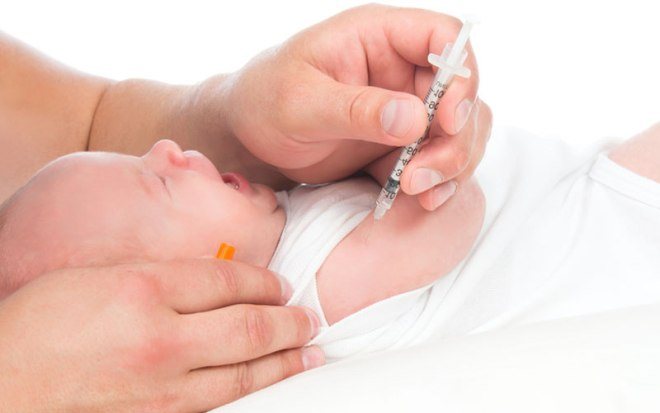
Features of scar formation at the grafting site
Intradermal injection provokes local infection, as a result of which an inflamed papule forms on the skin. The average diameter is no more than 1 cm. The redness gradually disappears within 30 minutes after the injection. This sequence of stages is evidence of the correct administration of the vaccine.
Another feature is the suppuration of the wound. The redness gives way to a blue or purple tint, indicating the accumulation of blood under the skin. The papule cavity is filled with visible purulent contents. This reaction is more typical for weakened infants. Scar formation in healthy children occurs quickly, without visible complications.
A bluish color and pus at the injection site are not a reason to worry. The wound cleanses itself after some time. In exceptional cases, it may take several days or even weeks and months. The whole process indicates the gradual production of antibodies.
The third feature is that vaccination is carried out strictly intradermally, and not subcutaneously. The latter leads to the formation of an abscess, and immunity is not developed. A keloid scar develops as a type of complication.
With normal vaccine uptake, a small scar gradually forms, called a post-vaccination mark. It is evidence that the person has been vaccinated against tuberculosis. Scar formation is considered a normal reaction of the body to BCG, and its absence should be alarming.
Rib sizes
The scar from BCG comes in different sizes, and the quality of the formed immunity is determined by it. The following values are accepted as standard:
- less than 4 mm – small;
- up to 8 mm is normal;
- up to 10 mm and above – large.
Sizes less than 4 mm are recognized as a consequence of ineffective vaccination - the body has not produced enough antibodies to resist the disease. A value of more than 5 mm is considered a good sign. Up to 10 mm - you should not worry, but if the scar after BCG is even larger, then immunity has probably not been developed.
Is it possible to delete it
The scar is permanent. After revaccination with BCG at 7 years of age, the size of the damage increases, since the injection is placed in the same place. Under no circumstances should the scar be treated with alcohol, ointments, or brilliant green with iodine. A superficial attempt to heal the wound will lead to complications or even tissue necrosis.
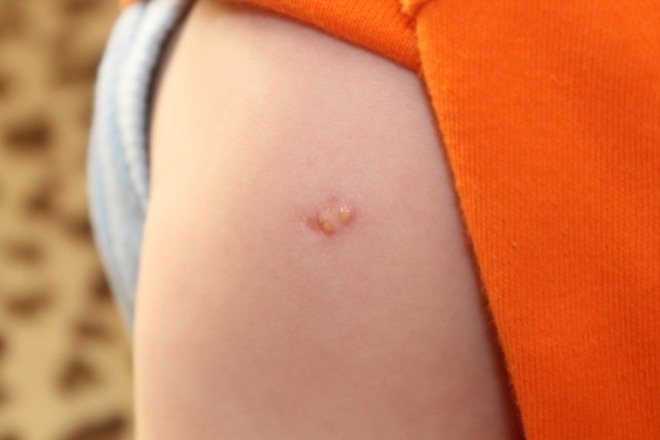
The scarred area can be removed several years after two vaccinations. Laser therapy and skin plastic surgery are used as the most effective methods. The immune system will not weaken due to the absence of a scar. The only drawback is that in the future doctors will not see the real picture and dynamics of the development of immune defense.
Possible contraindications
Compared to the World Health Organization list, the Russian list of contraindications includes many more factors.
Here are some of them:
- The child's weight does not exceed 2.5 kg.
- The presence of pathological and chronic diseases (intrauterine infections, hemolytic diseases, neurological disorders, pathological skin abnormalities). In this case, doctors wait until the child’s health is resolved and only then give permission for the vaccine.
- Immune deficiency.
- Presence of BCG infection in close relatives.
- Maternal HIV infection (human immunodeficiency virus).
- Abnormal growths anywhere on the skin.
- Positive result of the Mantoux test.
- Keloid scar resulting from the first BCG vaccination and lymphadenitis.
If these contraindications exist, you should definitely delay vaccination.
It is always worth monitoring the baby’s condition before any vaccinations and vaccinations, since the presence of contraindications can cause serious complications in the child, some of which are incurable. In any case, it is important to consult a doctor if deviations from the norm appear in order to resolve the situation in a timely manner.
Compatibility of other vaccines with BCG
The simultaneous administration of any vaccinations and BCG is strictly prohibited! This means that on the day of the BCG vaccine, no other procedures should be performed. The vaccine differs in that its reaction appears only 1-1.5 months after administration, that is, other vaccinations cannot be carried out during this period. If vaccinations are necessary, at least a month and a half must pass before the next one is given.
Do not carry out any vaccinations together with BCG.
For this reason, the hepatitis B vaccine is given in the maternity hospital before the BCG vaccine. The reaction after the hepatitis B vaccine occurs quickly, it takes no more than 4-5 days, so BCG is done after. So, on the first day a hepatitis vaccine is given, and only then, after 3-5 days, the BCG vaccine is given. Then there usually comes a period when the child should not receive any vaccinations, and it lasts 3 months. At this age, the child receives developed immunity from tuberculosis and the absence of other vaccine reactions.
Thus, the vaccinations required for placement in the maternity hospital are:
- hepatitis B vaccination;
- BCG vaccine.
In any case, always listen to your doctor, he will tell you when it is better to get this or that vaccination.

